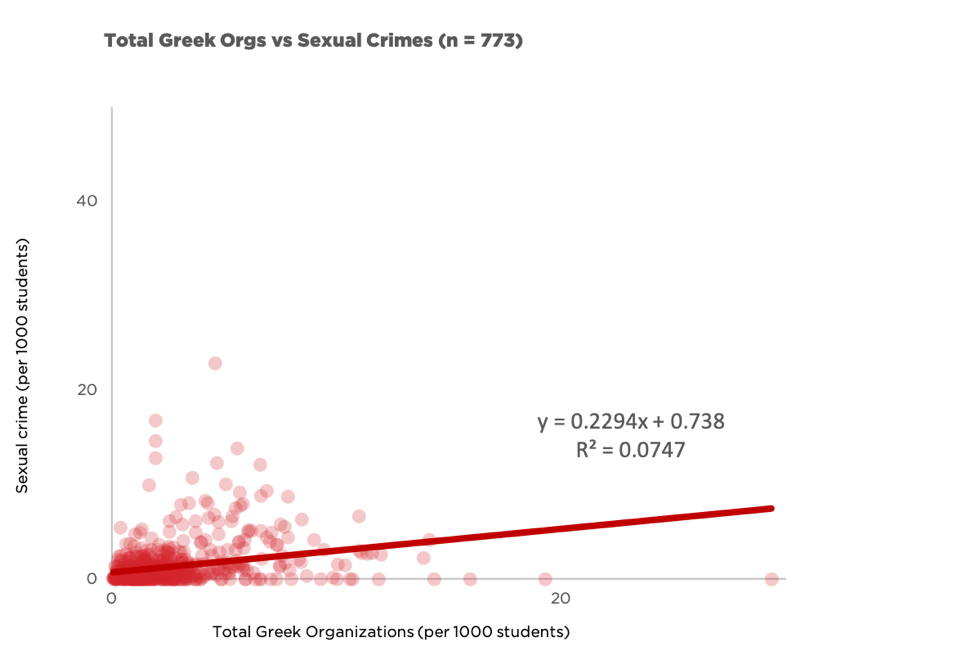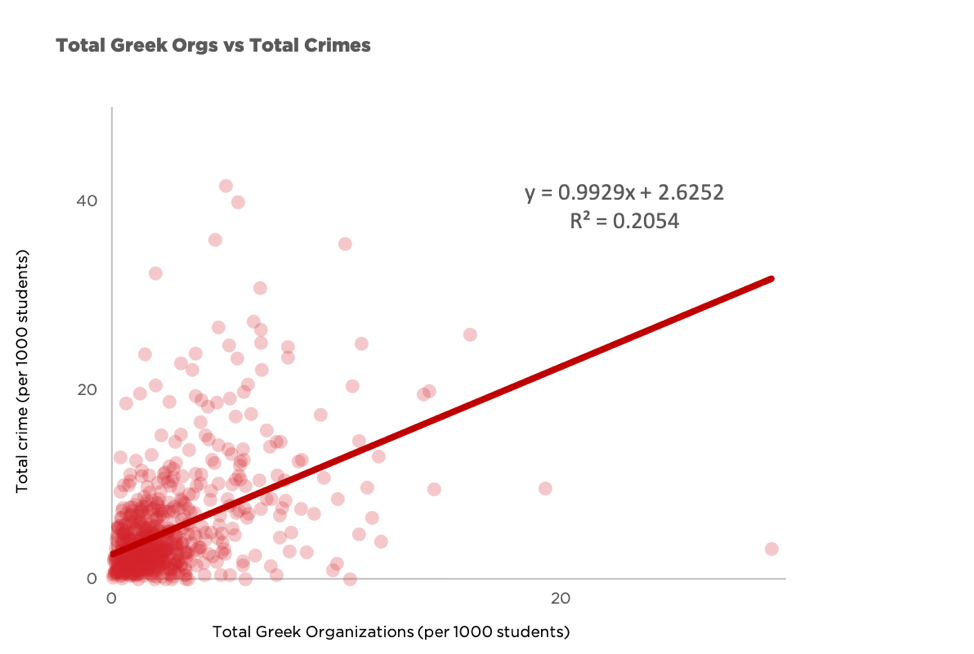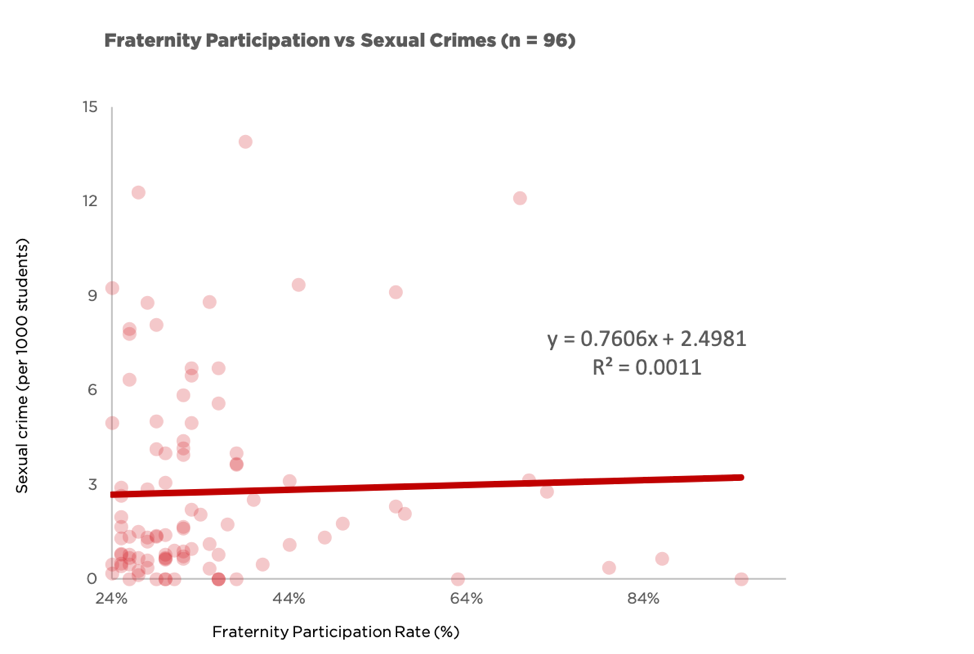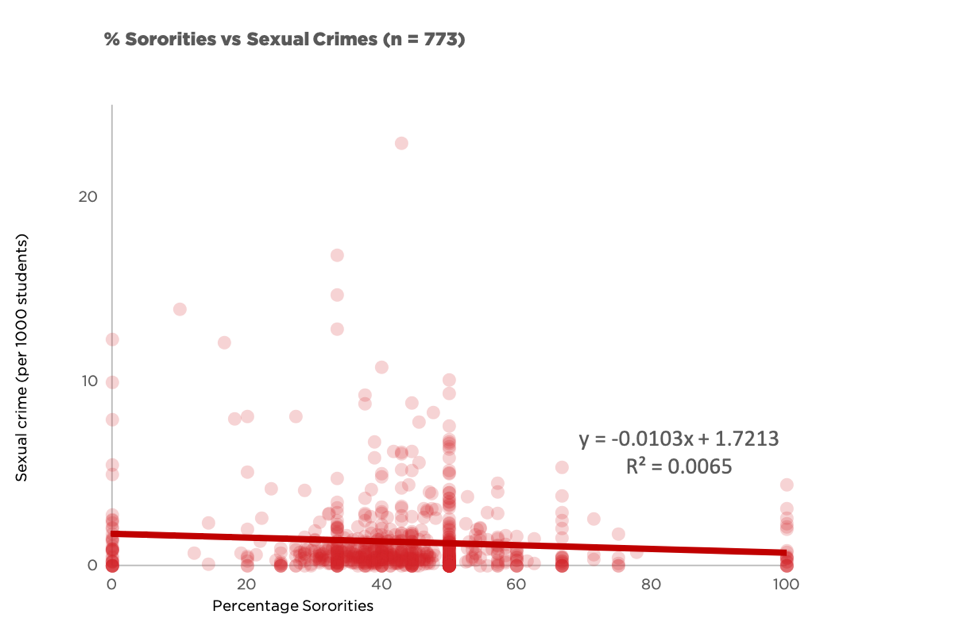In 2018, Harvard University implemented controversial sanctions on Single-Gender Social Organizations. The policy was initially formed in response to a University report on sexual assault prevention, which found that female college seniors who socialize in Harvard’s final clubs are significantly more likely to experience non-consensual sexual contact. Although the administration’s rationale for implementing sanctions has changed over the years, reducing sexual assault cases was arguably the impetus for the sanctions policy and remains a pressing topic today.
The controversy over SGSOs resurged in December 2018, when sororities and fraternities filed a lawsuit against Harvard alleging that the sanctions policy constitutes sex discrimination. Additional criticism of the policy surrounds the virtual elimination of all-female groups on campus in response to the sanctions, while all-male final clubs remain prevalent. Indeed, one of the concerns surrounding the new policy, expressed in 2016 protests, was that it would destroy safe spaces for women on campus.
The question is whether either of these claims — that SGSOs increase incidents of sexual assault or that female-only groups provide a safe space — are supported by the data. In general, there is some weak support for both sides. The evidence slightly favors the administration’s claim that reducing SGSO presence can reduce sexual assault and gendered violence, while it does not suggest that female-only social groups provide a safe space for women.
Where is the Data From?
Harvard tends to consider itself special, even when it comes to the social scene. Unfortunately, this also creates difficulties in analyzing the direct effects of final clubs, which do not exist at other institutions. Instead, Greek organizations — fraternities and sororities — provide the most accessible and comparable data across different schools. While this is not a perfect analogy for Harvard final clubs, the analysis of Greek organizations across the country can offer insight into how Harvard’s campus is affected by SGSOs.
Data on Greek organizations was gathered from two sources. First, Greek Rank, a website dedicated to reviewing colleges campuses on their Greek presence, was used to find data on the number of fraternities and sororities at each university. Second, data on the overall participation in fraternities was retrieved from U.S. News, which lists the 100 colleges with highest fraternity participation rates in 2017.
Crime data for various universities was downloaded from the Campus Safety and Security service of the United States Office for Postsecondary Education. The data was broken down by type of crime, and, for the purposes of this analysis, “sex crimes” refers to the crimes of rape and fondling.
All of the data for both crime and Greek organizations is normalized for school size so that the figures are in units per 1000 students. For most of the analysis, R2 values are used to represent strength of linear correlations between two sets of data. R2 values roughly represent the amount of variation in the data that is explained by a linear model relating the two variables: an R2 close to 1 indicates that two variables are highly correlated, while an R2 close to 0 indicates that two variables are not correlated with each other.
Fraternities, Sororities, and Crime
To test Harvard’s stated goal of reducing sexual crime by reducing the number of single-gender social organizations, a first analysis examined whether the two are actually correlated. The result is a weak but highly statistically significant positive correlation between the number of sexual crimes on a given campus and the number of Greek organizations (R2 = .075), the number of fraternities (R2 = .084), and the number of sororities (R2 = .048).

Similar correlations were found between crimes described by the Violence Against Women Act — which include domestic violence, dating violence, and stalking — and the number of Greek organizations (R2 = .054), the number of fraternities (R2=.049), and the number of sororities (R2 = .049). As with the case of sexual crimes, statistically significant positive correlations exist but are relatively weak. While the presence of SGSOs may have some influence on the rates of gendered violence, the influence is small and inconsistent.
In all of these cases, the correlation is relatively weak but exists nonetheless. This adds some credibility to the administration’s claims of SGSOs’ influence over sexual crimes. However, one possible explanation is that SGSOs encourage more criminal activity of all types by creating a more active social scene, rather than directly encouraging non-consensual sex. Indeed, there is a much stronger, albeit still relatively weak, positive correlation between total crime and the number of Greek organizations (R2 = .205), the number of fraternities (R2 = .203), and the number of sororities (R2 = .159). This analysis excluded an outlier in Gallaudet University, a school for the deaf with abnormally high crime rates.

Harvard’s policy does not entail shutting down SGSOs but seeks to dissuade prospective members from joining. While the sanctions policy has caused some social groups to go gender-neutral, for others the policy may act merely as a deterrent against participation. For these cases, an analysis of participation rates and sexual crime is more instructive. The data indicates much weaker and statistically insignificant correlations between fraternity participation and both total crime (R2 = .038) and sexual crime (R2= .001). The evidence that discouraging fraternity participation will reduce sexual assault is therefore limited.

From these analyses, the evidence supporting Harvard’s argument that SGSOs are associated with more sexual assault is mixed. While there is a significant relationship between the number of Greek organizations and rates of sexual crime, the correlation is relatively weak. The low correlation of sexual assault with club participation indicates that discouraging participation will also have a limited effect.
Perhaps more convincing is the idea that SGSOs generally contribute to a more active social scene that creates more overall crime, not just sexual crime. Previous academic research has found that large-scale social events like football games contribute to heightened levels of crime on campus. The more active social scene SGSOs create could increase crime in the same way. While this might offer an alternative justification for cracking down on SGSOs, it seems unconvincing that making single-gender groups co-ed would diminish the social scene and student crime rates by any significant degree.
Sororities to the Rescue?
While the evidence for the administration’s claim about sexual assault and Greek organizations is shaky at best, perhaps there is some validity to the idea that all-female organizations provide a safe space for women on campus. This analysis gauged such an effect based on the relationship between sororities’ share of campus Greek life and sexual crime rates. If sororities do provide a safe space, then there would be fewer incidents of sexual assault and violence against women at schools with more sororities than fraternities.
For the most part, the data does not support the argument that having more female-only organizations on campus creates a safer space for women. While there is a statistically significant negative correlation between incidence of sexual crimes on a given campus and the percentage of sororities, the correlation is incredibly weak (R2 = .006). The magnitude of the effect is also fairly small: a one percentage point increase in the share of sororities on a given campus predicts only 1 fewer incident of sexual crime per 100,000 students.

Notably, the above analysis likely includes schools that are single-gender. This could bias the analysis since there are presumably fewer incidents of sexual crime at single-gender schools. If the schools that have only sororities or only fraternities are excluded, the correlation between sexual crimes and proportion of sororities is weaker (R2 = 0.004) and no longer statistically significant.
The relationship between sororities and violence is even weaker: VAWA crimes and a school’s proportion of sororities have a correlation of zero. This suggests that female-only social organizations have no effect on the safety of women from outright violence.
Overall, there is very little statistical evidence to suggest that female-only organizations foster safety for women on campus, and if there is an effect, its magnitude is negligible. While there may be other reasons why women-only social spaces could be important for Harvard, the data makes it clear that the presence of female-only groups makes almost no difference in women’s safety.
Caution: Interpretations
As with any data, it is important to be cautious when making interpretations. The most obvious concern with the above data is that correlation does not imply causation. While there is some weak to moderate correlation between SGSOs and crime, this does not mean that SGSOs cause crime. There could be other factors affecting both the incidence of crime and the presence of SGSOs on a given campus.
A second concern involves the credibility of the underlying data. It is unclear how Greek Rank obtains its counts for sororities and fraternities, which means that the accuracy of the data cannot be guaranteed. However, even if there exist imperfections in the data obtained from Greek Rank, they do not invalidate the conclusions of this analysis. There is no apparent reason why there would be a systematic bias in Greek Rank’s data to show more Greek organizations in schools with more crime.
Finally, the statistical methods in this analysis were likely imperfect and could be improved to yield more accurate results. The analysis presented here is intended to be a first attempt at providing some statistical basis for the debate surrounding SGSOs, and more sophisticated or advanced statistical analyses could control for more outside variables, such as schools’ public or private status and the safety of their surrounding areas.
Conclusions
While the data does not strongly suggest that SGSOs increase sexual crime or that female groups offer a safe space, the evidence for the former is much more convincing. The strongest evidence suggests that the presence of SGSOs is correlated with crime in general, although a weak but highly statistically significant relationship exists between SGSOs and both sexual and VAWA crimes. Meanwhile, the relationship between sororities and sexual safety is much weaker. The analysis here cannot conclusively address the issue of SGSOs and safety, and the debate is sure to continue both in the courtroom and on campus. Hopefully that debate takes place with data and empirical evidence at the forefront.
This article is the product of analysis by the Harvard Open Data Project, a student-faculty group that analyzes public Harvard data to hold Harvard institutions accountable. The raw data can be found here.
Image Credit: Wikimedia Commons/Owlclub
